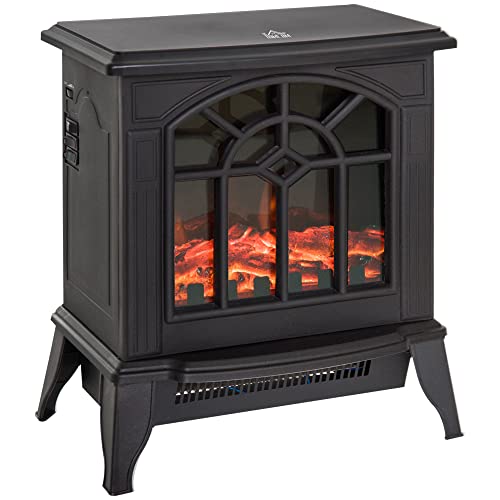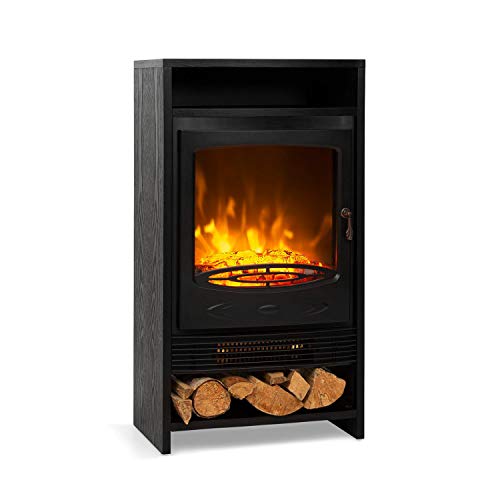Fireplace's History History Of Fireplace
페이지 정보
작성자 Cecil 작성일25-01-21 03:40 조회4회 댓글0건관련링크
본문
 What Are Fireplace Accessories?
What Are Fireplace Accessories? Fireplaces are an integral part of many homes that provide warmth and comfort throughout the day and night. They also add beauty and value to the house.
Fireplaces are an integral part of many homes that provide warmth and comfort throughout the day and night. They also add beauty and value to the house.Homeowners can take on some of these projects regardless of whether your fireplace needs facelifts or simple repairs. However, certain jobs requiring gas service must be left to professionals with the proper training.
The Hearth
The hearth is a non-combustible surface that surrounds the fireplace or wood-burning stove. It could be a elevated area or simply the foundation on which the fireplace sits. The word "hearth" is usually used to refer to the entirety of the fireplace, which includes the firebox, the raised floor and mantel as well as the chimney. However, it is important to note that there are specific fire safety rules regarding how the fireplace and its components should be built, so please check with your local governing body for more information.
Hearths are usually constructed from brick, stone or cement, and are a focal point of any room. They are designed to create a barrier between the fire and the flooring and protect against accidental fires caused by stray logs or embers. They can also be used to store fireplace tools, wood, and other equipment.
Archaeological studies have shown that hearths played a significant role in the early human era. It is widely believed that they provided light, food, security, and warmth.
Although a hearth can provide many advantages, it can cause serious health problems when it is not maintained properly. Smoke exposure increases blood nitrogen levels, which prevents red blood cells (methemoglobinemia) from delivering oxygen into the tissues. At high concentrations it can cause dizziness, nausea, and loss of consciousness.
Hearths used to be constructed from rock however, they are now typically made of concrete or brick. They are available in a variety of shapes and sizes. Some cooking marble fireplaces feature hearths that are able to cover the entire wall, while others are smaller and purely decorative elements that cover the Tabletop fireplace (https://forum.joaoapps.com/proxy.php?link=https://Www.fireplacesandstoves.uk)'s opening. The material of a hearth can have a significant impact on its appearance, price and heat resistance.
The Surround
A fireplace surround (also known as a mantel) is the frame that is situated above the hearth and adds to the ambiance of the room. It's not just aesthetically pleasing, but also functional since it shields combustibles from the fire and also deflects heat back into the room. It can also be used as a shelf to display household items like mirrors or paintings.
There are different options depending on the size and type of the fireplace. Certain materials are non-combustible, while others must be in compliance with national and local standards for clearance distances from the combustible object.
The most popular options for surrounds are brick, stone, or concrete. Certain stone surrounds are carved using decorative features such as bevels or bolection moulding. These stone surrounds may include plinths or cornices. These details can create an elegant look that complements the style of the house.
Plaster is a different option. It can be made from a mix of sand and cement, and decorated to match any style of architecture. For instance, a textured surround can complement a Mission-style home.
Tile is the last choice for a wall. Tiles are available in a range of designs and colors. It can be used as an accent to the surround, or spread across the entire wall for an eye-catching focal feature. Tile is an excellent choice for homes in contemporary styles.
The surround is among the first things guests notice upon entering a space. For this reason, it is important to choose the right piece that will set the tone of your space and add to the value of your home.
The Firebox
The firebox is the space behind a fireplace opening where the fire can be created and maintained. The firebox is usually surrounded by a chimney to allow the smoke to escape. Usually, these traditional structures burn wood, however some also burn gas, such as natural gas or propane.
Regardless of what type of fuel you are using the firebox is the location where the combustion takes place and must be maintained for safety and efficiency. The firebox consists of several important components. These include the grate, the fire poker, and the air damper.
In addition to keeping the firebox and its lining in good shape It is essential to clean your fireplace frequently. The inside of the fireplace will be soiled by dust and soot because of its constant exposure to high temperatures. You can make use of a scraper or wirebrush to get rid of the soot and ash that has been caked on.
It's also a great idea to make use of steel slag or stainless steel to line the interior of the firebox to ensure durability and long-term use. These types of metals resist corrosion and will not rust. They also have an even heat distribution, which will last longer.
You can also make your fireplace by using decorative fire logs and lava stones. Some homeowners also opt to utilize modern glass with decorative designs as an alternative. Ensure that the fireplace you choose to use is UL approved. This includes the fireplace as along with any accessories or modern Fireplace decorations you put on it.
The Burner
Burners are a great method to add warmth and beauty to a space. They come in various shapes and sizes which makes it easy to locate the ideal burner for your home. Some are equipped with remotes so that you can control the flames from any place in the house. Fire burners are safe to use, making them an ideal choice for outdoor and indoor spaces.
There are many types of burners. Each has distinct advantages and disadvantages. Some are more expensive, however they all have a myriad of advantages. Some are more secure than others, and some work with or without chimneys. Whatever type of burner you choose, make sure to adhere to the directions in the manual for the product. This will ensure the burner is installed correctly and is in compliance with the laws of your state and local authorities.
While burning wood fireplaces is the most popular way to enjoy the flame of a marble fireplace, it's not always the most practical. The smoke and soot generated from burning wood can be dangerous to you and your family. Ethanol burners create water vapor, and very little CO2, which is more sustainable.
A fireplace can also prove useful in the event of an outage. During winter, heavy snow and ice can build up on trees, which may cause them to fall, and even knock down under-hanging power lines. Fireplaces can be used to cook and keep warm when the electricity goes out in your home. This is a huge benefit for homeowners who wish to be prepared for the unexpected.
The Flu
The flue is an inner tunnel of a chimney, which carries the gases and smoke from your fireplace away from your home. It is also an important component for a safe, efficient fire. A flue creates a wind that pulls air into the fire. This allows the fuel to burn completely and reduces smoke.
The drafting action of the flue stops the hot gases emitted by the fire from blowing back down into your home, instead, they are carried out to the outside where they can cool. It is this controlled venting that stops carbon monoxide poisoning.
Check your chimney regularly for any leaks or blockages. The flue pipe (a steel tube or duct that runs through the middle of the chimney) should be cleaned using special cleaning chemicals and equipment. The metal brush, a drill fitted with brick bits, and masking tape are needed to remove any tarnish or soot that has been stuck on the chimney's walls. flue pipe.
The flue should be kept closed when you aren't using your fireplace will help prevent the air conditioned inside from getting out. This can also stop rain or wind gusts entering the fireplace and causing damage to your wood stove or gas furnace.
The damper, which is located at the bottom of the flue pipe, or flue tiles and on the top of the fireplace can be shut or opened with a latch or handle. It is designed to keep the flue open while the fire is burning however, it should be shut when not in use to help reduce your energy bills and keep precipitation and animals out of your fireplace.
댓글목록
등록된 댓글이 없습니다.


